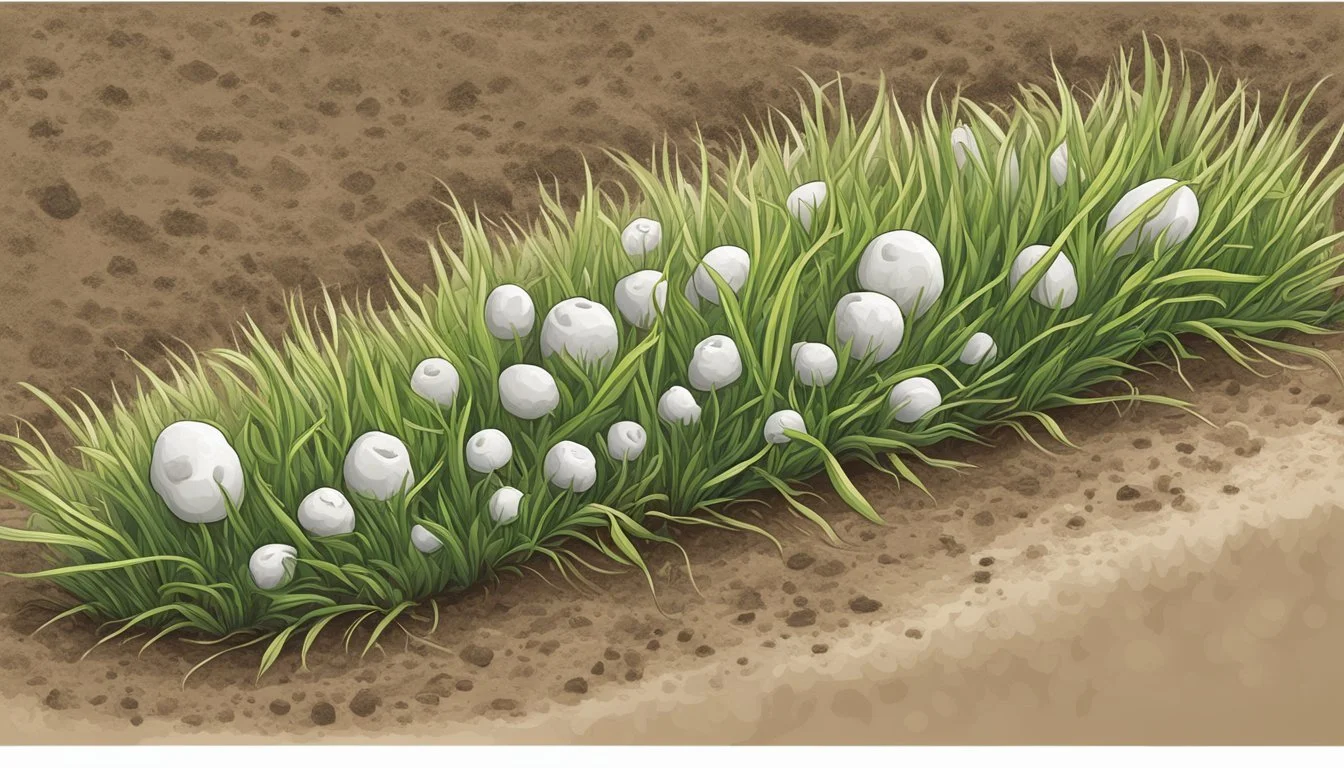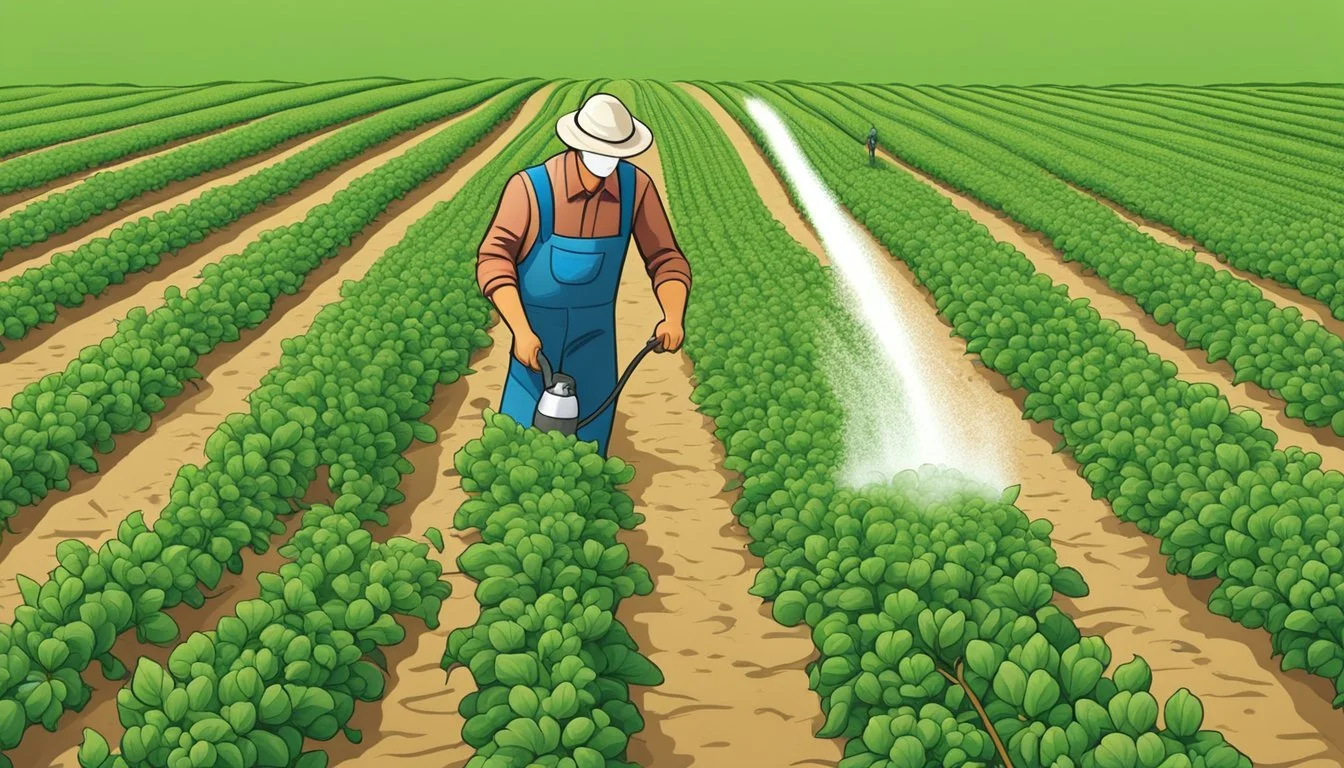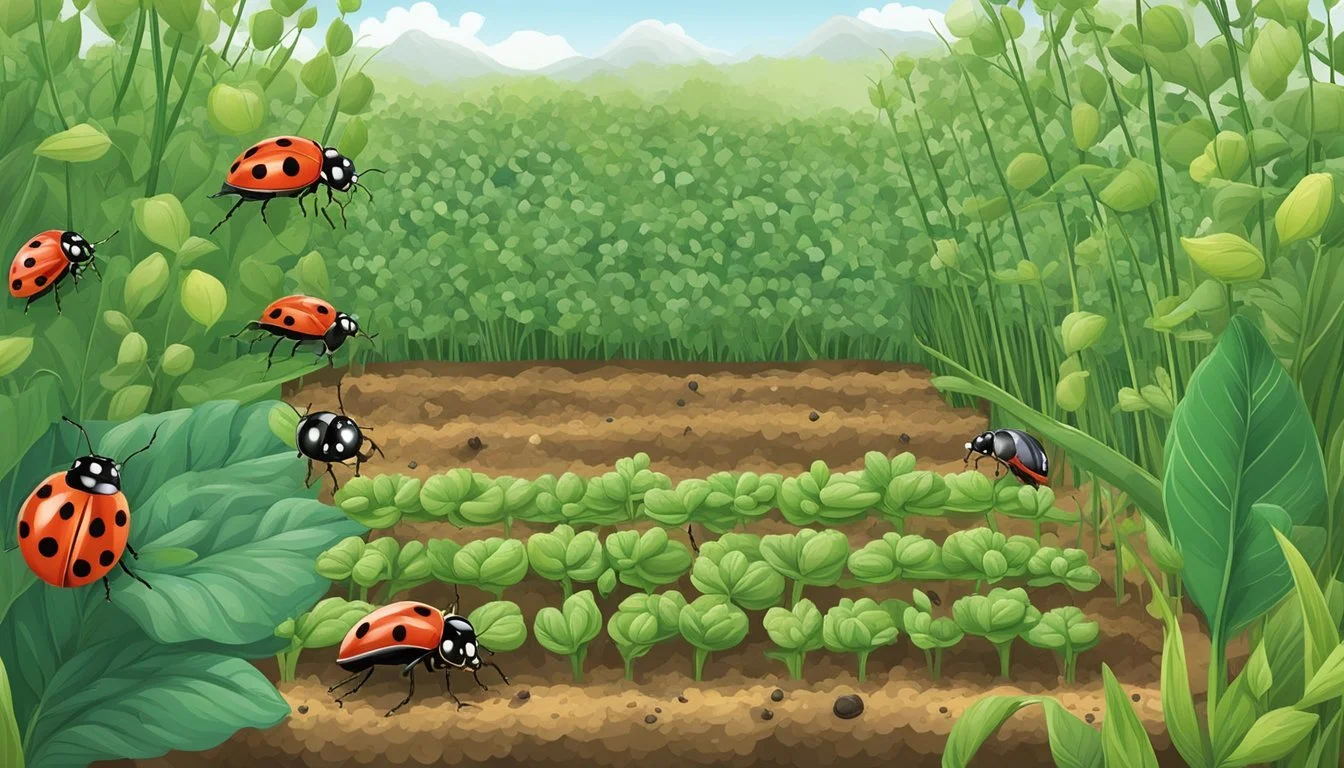Protecting Crops from White Grubs
Effective Management Strategies
White grubs, the larval stage of various beetles, pose a significant threat to agricultural productivity. These grubs typically reside in the soil, where they feed on the roots of plants such as grass, corn, soybeans, and other crops. Understanding their life cycle and the extent of damage they inflict is crucial for developing strategies to protect valuable crops from their voracious appetites. As they consume root hairs and lateral roots, they can severely impair plant growth, leading to reduced yields and, in some cases, plant death.
Effective management of white grubs begins with accurate identification and grasping the extent of infestation. The challenge is that these pests are often concealed within the soil, making early detection and control difficult to achieve. Farmers and agricultural professionals need to inspect the soil and roots regularly for signs of these pests. Given their propensity to feed on a variety of root systems, a proactive approach combining cultural, biological, and chemical control measures can help mitigate the impact of these subterranean pests on agricultural crops.
Identifying White Grubs
When protecting crops, understanding how to identify white grubs is crucial. Differentiating between species, grasping their life cycle, and detecting the signs of their damage are pivotal steps in crop protection.
Recognizing Grub Species
White grubs are the larvae of scarab beetles, and they are generally C-shaped. They are commonly known as the offspring of the Japanese beetle (Popillia japonica), masked chafer, European chafer, Oriental beetle, June beetles, and other members of the Scarabaeidae family. The grubs can be identified by their white bodies and brown heads, with specific species nuances such as hair patterns on the raster—like the unique "zipper" pattern seen in some true white grubs.
Life Cycle Comprehension
Understanding the life cycle of white grubs provides insight into control strategies. The life cycle includes egg, larval, pupal, and adult stages. Japanese beetles, for example, have a one-year cycle, whereas the June beetle can take up to three years to mature. During their larval phase, grubs primarily feed on roots and can cause significant damage to crops.
Signs of White Grub Damage
Visible signs of white grub damage include wilting plants and patches of brown, dying grass indicating root damage. Upon inspecting the soil, soft texture or the presence of C-shaped larvae can confirm suspicion. Further examination of plant roots may reveal they have been consumed, which is indicative of a grub infestation. Methods for checking for grubs involve digging up soil around affected areas and looking for the larvae directly, as detailed in MorningChores's guide.
Lifecycle and Biology
Understanding the lifecycle and biology of white grubs is crucial for effective crop protection. The development from egg to adult involves distinct stages, each presenting opportunities for intervention.
Egg Development
Eggs are laid in the soil by adult beetles. They typically develop in the soil for two to four weeks depending on species and soil conditions. Optimal conditions for egg development include warm, moist soil, which is conducive to the hatching of larvae.
Larval Stages
The larval stage is when white grubs cause the most damage to crops. After hatching, they pass through three instars, increasing in size with each stage. In their first year, larvae primarily feed on organic matter and grass roots, residing in the top couple inches of soil. White grubs grow to nearly one inch long, with a creamy white body and a reddish-brown head, and they are typically found in a characteristic C-shape.
Pupation and Adult Emergence
White grubs eventually pupate in the soil after the final larval instar. This pupal phase can last for several weeks. Upon completing pupation, adults emerge from the soil to begin the cycle anew, with the timing of this emergence being critical for mating and subsequent egg laying. The whole cycle can take one to three years to complete, depending on the species and environmental factors.
White Grub Impact on Turfgrass
White grubs represent a significant threat to the health and appearance of turfgrass, often causing considerable damage before signs are visibly detected.
Root Damage and Grass Injury
Grubs feed on the roots of turfgrass, which can lead to discolored, wilted grass that easily detaches from the soil. This feeding disrupts the plant's ability to absorb water and nutrients, effectively starving the grass and leading to patches of dead sod. Without intervention, healthy lawns can quickly turn into damaged, sparse landscapes.
Assessing Grub Activity
To determine the extent of white grub activity, one must examine the root zone closely. Telltale signs of grub presence include reduced root hairs and evidence of chewing. On average, turfgrass can tolerate about 5-7 grubs per square foot before showing signs of injury. If grub numbers exceed this threshold or the lawn is stressed, it may exhibit more severe damage. Regular inspection helps in early detection and timely management of these destructive pests.
Cultural Control Strategies
Effective management of white grubs in turfgrass involves several cultural control strategies aimed at creating unfavorable conditions for grubs while promoting healthy grass growth. The implementation of appropriate lawn health maintenance, soil management, and irrigation practices is crucial.
Maintaining Lawn Health
Healthy turf can withstand white grub infestations better than weakened grass. Key practices to maintain lawn health include:
Mowing: Keeping turfgrass at the recommended height helps maintain a thick lawn that supports robust root systems.
Nutrients: Regularly testing soil and applying the necessary nutrients can prevent thatch buildup and promote lawn vigor.
Soil Management
To deter white grub activity, one must focus on creating conditions in the soil that are less conducive to their survival:
Organic Matter: Increasing organic matter can enhance soil fertility and structure which supports turfgrass health and can indirectly suppress grub populations.
Thatch Control: Reducing thatch by aeration helps to manage grub populations by removing their habitat and exposing them to predators.
Adequate Irrigation Practices
Irrigation must be carefully managed since both over and under-watering can impact white grub infestations. Guidelines include:
Regular Watering: This promotes deep root growth which can tolerate grub damage better.
Allowing Drying: Periodically letting the top layer of soil dry can make it less appealing for adult beetles to lay eggs.
Monitoring and Thresholds
In managing white grubs, accurate monitoring is critical to identify the need for control measures. Setting precise action thresholds allows for timely and effective intervention without unnecessary treatment.
Scouting for Grub Presence
Scouting begins with visual inspections and involves searching the soil at the root zone for white grubs. Taking several soil samples from different areas of the crop is essential, as grubs are not evenly dispersed. A common practice is to remove soil in sections, typically a square foot, and sift through it, looking for the characteristic C-shaped larvae. Large grubs are white with a brown head capsule and may have distinctive patterns of bristles on their undersides. For more specific identification, resources like True White Grub Identification and Management can be referred to for visual aid and additional information.
Setting Action Thresholds
Thresholds for action are based on grub population densities and should be determined by the acceptable level of damage to the crops. A sampling method may involve checking a predetermined number of samples before deciding on a control strategy. The thresholds will vary depending on the tolerance of the crop, with some healthy crops being able to withstand higher numbers. In contrast, turf under stress may have lower thresholds. Effective white grub management heavily depends on these thresholds to apply treatments only when necessary, thus avoiding excess use of insecticides and preserving beneficial organisms in the ecosystem.
Chemical Control Options
Effective management of white grub populations in crops often necessitates the use of specific insecticides that target larval stages of the pest. Choosing the right insecticide and applying it correctly are fundamental to achieving optimal results.
Insecticides and Their Application
Insecticides commonly utilized for white grub management include neonicotinoids such as imidacloprid and thiamethoxam, as well as pyrethroids like bifenthrin. For more robust control, chlorantraniliprole represents a newer class of chemistry with a different mode of action. Traditional options like carbaryl and trichlorfon are also employed but may be less favored due to environmental and safety concerns.
To apply insecticides effectively, it's important to adhere to label instructions. The chemical should reach the root zone where the grubs feed; this often involves irrigation to move the product into the soil. Preventive insecticides should be applied before egg-laying begins, generally in late spring or early summer.
Understanding Insecticide Efficacy
The efficacy of an insecticide against white grubs is affected by several factors. To begin, selecting an insecticide with proven effectiveness against the specific species of grubs present is essential. Environmental conditions, timing of application, and the health status of the crop can all influence the outcomes.
Neonicotinoids: Imidacloprid is effective for preventive control but may have reduced impact on larger, more mature grubs.
Chlorantraniliprole: Exhibits excellent preventive control, affecting even the larger, third instar larvae.
Pyrethroids and Carbaryl: Provide a more immediate knockdown effect and may be used for curative treatments.
It is critical to follow the insecticide's label for application rates and timing to maximize efficacy while minimizing environmental impact.
Non-Chemical Interventions
Protecting crops from white grubs can be achieved effectively through non-chemical means. Harnessing biological control methods and encouraging botanical and natural predators are central to this strategy.
Biological Control Methods
Using biological controls involves introducing or encouraging natural enemies of white grubs to limit their population. Milky spore (Paenibacillus popilliae) is a bacterium that specifically targets Japanese beetle grubs. When grubs ingest this bacterium, it causes a disease that is fatal only to them. Bacillus thuringiensis is another bacterium known for controlling caterpillar and grub populations in crops.
Beneficial nematodes, specifically Heterorhabditis bacteriophora, are microscopic worms that seek out grubs and infect them with bacteria that kill the grub from the inside out. This method is particularly effective in moist soil conditions where nematodes thrive.
Botanical and Natural Predators
Emphasizing the cultivation of predators of white grubs represents a key tactic in non-chemical crop protection. Certain wasp species, such as the Tiphiid and Scoliidae wasps, act as natural biocontrol agents, with their life cycles directly impacting grub populations.
Natural predators, including birds and small mammals, can help control grub populations by feeding on them. Encouraging these predators by creating a friendly habitat can form an integral part of a white grub management strategy.
Preventative Practices
Effective management of white grubs begins with preventive measures. By focusing on the early stages of the pest's life cycle and the planting practices, one can significantly reduce the risk of infestation and protect their crops.
Planting Resistant Vegetation
When considering vegetation, selecting species that are less prone to white grub damage is crucial. For instance, planting grass species that are tolerant to grub activity can aid in minimizing the impact on turf. In agricultural settings, crops like corn and soybean have certain varieties that exhibit resistance to grubs. Integrating ornamentals that do not attract adult beetles for egg-laying can also serve as a deterrent, thus preventing the next generation of grubs.
Effective Seed Treatments
Seed treatments play a pivotal role in preempting white grub damage in crops. The application of specific insecticides to seeds can protect young plants during their most vulnerable phases. For crops such as corn and soybean, this not only safeguards the seedlings but also provides an invisible shield that helps prevent beetles from laying eggs in the vicinity of the treated plants. It's a targeted and efficient method to reduce future grub populations.
Understanding Grub-Favorable Conditions
White grubs thrive in specific settings, and understanding these environments is crucial for protecting crops. The presence of organic matter and the pests' overwintering habits are significant factors contributing to their proliferation.
Importance of Organic Matter
Organic matter in the soil serves as a critical food source for white grub larvae. These pests begin their life cycle consuming decaying plant materials, which promote their growth and development. Soils rich in organic matter, often found in well-fertilized grasslands, are especially attractive to the adults for laying eggs. The larvae benefit from these conditions, as they provide abundant food resources, enabling a higher survival rate and potentially larger populations.
Influence of Overwintering Behavior
Overwintering behavior is a vital aspect of grub survival and subsequent crop damage. White grubs typically burrow deep into the soil to escape freezing temperatures during winter. Come spring, they move closer to the surface, where they continue feeding on the roots of grasses before eventually emerging as adults. This behavior is instrumental in understanding their lifecycle as it affects when and how they are likely to impact crops. The timing of preventative measures should be aligned with the grubs' overwintering patterns to maximize effectiveness.
Integrated Pest Management (IPM)
Integrated Pest Management, or IPM, is a strategic approach in agriculture that combines various control methods to protect crops from pests such as white grubs. It emphasizes the timing of interventions and continuous management to reduce pest damage effectively.
Combining Control Methods
IPM involves integrating multiple strategies to manage white grubs. These strategies include:
Cultural Controls: Implementing crop rotation, proper irrigation, and soil management to create unfavorable conditions for white grubs.
Biological Controls: Utilizing natural predators or pathogens to suppress the grub population.
Chemical Controls: Applying insecticides judiciously when grub populations exceed economic thresholds.
Physical and Mechanical Controls: Employing methods like hand-picking or tilling the soil to disrupt the grub's life cycle.
The combination of these methods aims to control white grubs by not relying on a single tactic that could lead to resistance or environmental harm.
Evaluation and Review of IPM Programs
It's critical for farmers to evaluate the effectiveness of their IPM programs regularly and review their strategies. The key components for evaluation include:
Monitoring: Regular scouting for white grub infestations to determine if action is necessary.
Threshold Levels: Assessing if the number of grubs per square foot crosses the economic threshold that justifies intervention.
Record Keeping: Maintaining detailed records of pest populations, control measures used, and results of these actions.
Through consistent evaluation and adaptation, IPM programs remain effective in the ever-evolving challenge of pest management.
Frequently Asked Questions
In this section, readers will uncover specific information about combating white grubs in gardens, understanding their impact on plant health, their lifecycle, human interaction, and preventive strategies.
How can one effectively eliminate white grubs from a garden?
Eliminating white grubs requires detection and intervention. Gardeners often utilize a variety of methods, such as applying milky spore disease, nematodes, or chemical insecticides. Some methods may be more suited depending on local regulations and environmental concerns. For more detailed instructions, Gardener’s Path offers a comprehensive guide.
Are white grubs detrimental to plant health, and if so, how?
Yes, white grubs are highly detrimental to plant health. They feed on the roots of plants, which can lead to wilting, chlorosis, and stunting. In severe cases, this root damage can lead to plant death. Mississippi State University Extension Service explains the impact of white grubs on turf grass and other plants.
What does the life cycle of a white grub entail?
The life cycle of a white grub typically spans two to three years. It begins as an egg laid by a female beetle, then progresses through the larval stage as a grub, followed by the pupal stage, and culminates in adulthood as a beetle. Crop Science US - Bayer gives further insight into this cycle, especially in agricultural contexts.
Can humans experience bites from white grubs?
Humans are generally not at risk of being bitten by white grubs. These larvae do not possess biting mouthparts that could harm humans, as they are primarily root feeders.
Into what do white grubs metamorphose?
White grubs metamorphose into various species of beetles, such as June beetles and May beetles, depending on the specific species of the larvae. This transition from larva to adult beetle completes their life cycle. Integrated Crop Management provides detailed identification criteria for these beetles.
What methods exist for preventing the infestation of white grubs?
To prevent infestation, maintaining a healthy lawn with proper irrigation and fertilization is crucial. Biological control agents like beneficial nematodes can also be introduced. Additionally, chemical controls are available, though they should be used with cautious consideration to the environmental impact. For more strategies on prevention, MorningChores can be referenced for a range of solutions.







